As Theaters Open, Dedicated Filmgoers Take Their Seats … Others Have Options
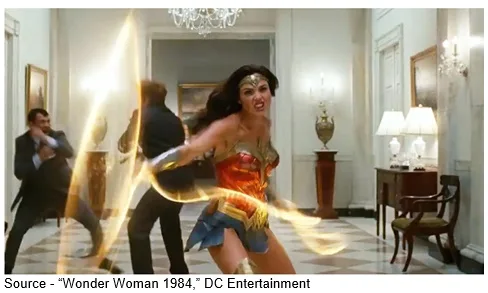
Finally, things are getting back to normal and we’re able to go to our club to workout.
Okay, it’s not completely normal, but it’s a step in the right direction. We can do our workouts outside so far apart that we’re really alone together.
Can hardly wait for the cold winter rains.
Before class a few weeks ago we were hollering back and forth with Sarah, a lady friend who has to actually “go” to a movie, or it isn’t a real movie.
For her, stuff on a TV set is TV.
When everything was shut down, she found a drive-in.
Finally, IMAX had Unhinged and shortly after that, AMC had Tenet.
She hit them both with her sanitizer and mask.

Not a lot of other folks had joined her at AMC for Christopher Nolan’s confusing tentpole; but at 15 cents (1920 prices) she was cautiously happy.
Why not? Even the popcorn was cheap.
And every week, she is less and less alone.
AMC, Cinemark, IMAX, Wanda, Cinemex and others were glad to have her and the other dedicated cinemagoers back because the chains were hemorrhaging during the lockdown and grumbling because studios were going PVOD to keep cash/content moving.

Of course China, the world’s second largest movie market with half of the 5,206 complexes open and mandated 30 percent capacity restraints, still had 4.1M people spend $12.6M on tickets the first week to check out five new titles and 10-plus rereleases.
Huayi Brothers, CEO at China’s leading multinational entertainment company, said the release of The Eight Hundred racked up a total of about $400M and IMAX theaters reported it was the strongest box office in more than six months.
Okay, it was a low bar; but still, the historic epic was exactly the kind of film China and the industry needed to stimulate interest and theatrical attendance.
Attendance was so good that the firm had plans to release high-profile films through the end of the year.
Blockbusters originally scheduled for January’s Chinese New Year high season still haven’t been released.
Titles on the schedule include Jackie Chan vehicle Vanguard and Dante Lam’s mega-actioner The Rescue as well as Hollywood’s releases Tenet, James Bond movie No Time to Die, Wonder Woman 1984, Black Widow, Top Gun: Maverick and more.
“Local Chinese or Hollywood blockbusters will accelerate the return of the audiences,” Huayi’s CEO proclaimed.
The big question is how long it will take cinema attendance to return to the new normal — China’s box office growth of $9B and North America’s $11B plus.
“All things considered, China’s numbers are comparatively strong,” said Michael Goodman, Strategy Analytics Director of Television & Media Strategies. “The country has been very conservative in the seating they allow and theater operators around the globe want to be sure that when they open, they stay open.
“In every country, movie theaters have been among the last businesses to reopen and they know another major shutdown will have a long-term effect,” he emphasized.
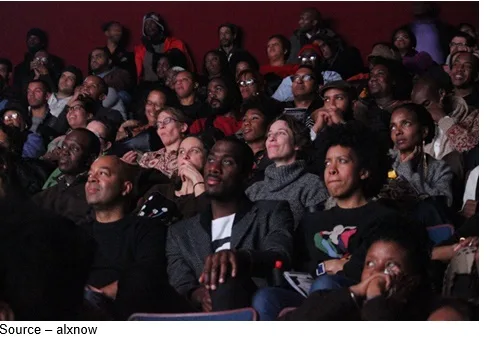
The M&E industry can’t afford that because theatrical showings is a major part of the industry’s income, even as streaming continues to grow.
Last year, the more than 1,895 thousand digital screens around the globe accounted for nearly $45B in box office receipts. The idea of how soon people will return to sitting in an enclosed space with strangers is still a big question mark.
“There are a large number of people who are anxious for the curve to really flatten and things to get back to a new normal,” Goodman noted. “I don’t have profound insight into when that will be but enjoying a movie in a theater could be the relief people want and need after what they’ve been through.
“Initially, audiences will be sparse but they will grow because the smell of popcorn, a big screen and enjoying a collective community experience is a welcome break.
“The dedicated and serious moviegoer will continue going to the cinema on a regular basis,” he added. “Casual, occasional folks will return to their streaming and home viewing, saving going to the movie theater for special occasions or tentpole productions.”
The industry has grown up with theatrical openings and obviously, theaters need films. The question to be answered will be how long it will take for people to feel safe/comfortable watching movies in well-sanitized theaters.
If a movie costs $100 million to make, the rule of thumb has historically been it needs at least that much in the domestic box office, plus all the other windows — international, DVD sales, VOD, premium channels and SVOD — to break even.
While films are obviously budgeted to make a profit, it’s not just about the money.
Until the pandemic hit, another reason for sticking to theatrical releases instead of swapping over to on-demand streaming was the Academy Awards.
Fortunately, the Academy has slowly revised its submission requirements.
While the bean counters will disagree; for studio executives and filmmakers, it’s less about money and more about the prestige and knowing people come together to enjoy the communal experience of watching a movie in a big group.
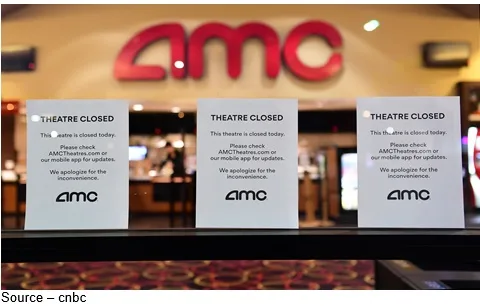
EPs and studio executives that found the theater doors closed shifted their film openings two, three and more times and made what they hope is their final adjustment to get a prime calendar spot.
Looking at the major movies, franchises that have been shifted to next year, 2021 could be just the year our gotta-go friend Sarah has been waiting for.

Studio executives shifted release dates. Since they had already spent hundreds of millions of marketing dollars for a number of major projects (Universal’s Trolls World Tour, Paramount’s Scoob, Disney’s Mulan and others), they would offer them direct to viewers (pay for view) or move them directly to their subscription services.
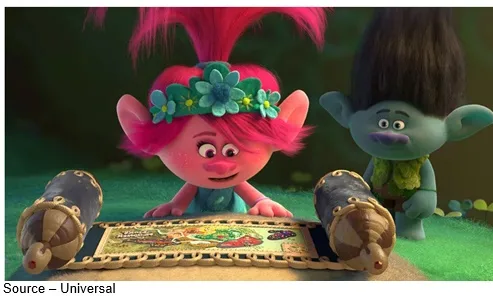
While AMC didn’t exactly take the news well when Universal announced that Trolls World Tour would be available to home viewers for $20, AMC’s CEO Adam Aron seemed to realize that business is business and it would be better to embrace the new normal.
Theater owners have long held off studio pressures to reduce the 90-day exclusivity window to something closer to what studios wanted–same-day release.
AMC and Universal struck what some have called a groundbreaking deal that would give them a 17-day window (plus some added streaming revenue) before films are available through rental services.
While other theater chains obviously don’t agree with the move, it has “encouraged” studios to be even more committed to the theatrical opening first relationship–not just in such an uncertain period, but for the long term.
The Universal/AMC agreement offers stabity for both exhibitors and the studios and offers comparable returns for cinemas while increasing revenue for studio mid- and lower-tier releases. Monetizing major titles would best be done by more traditional windowing.
Depending on the speed and strength of in-theater attendance, the 17-day window will become a starting point for discussions by both parties.
“Moviegoers will expect continual reassurance that conditions are safe,” Goodman said, “Theaters are taking every step to reassure ticket holders that they are safe in addition to ensuring they are comfortable and enjoy the cinema experience. We’re seeing that as attendance slowly improves.
“It is really a symbiotic relationship,” he noted. “Theaters are desperate to show something on their screens that will get people back in the seats and studios have just the remedy. Both sides of the discussion want to achieve the same goal – get back to the point where we can talk about films producing $1B in global ticket sales and how quickly the industry will achieve and surpass its $42.5B combined sales of last year.”
While cinema ticket sales will be down considerably, perhaps through mid-2021 (or beyond), there is still a large number of people (such as Mary) who can only be satisfied by a good movie in a theater.
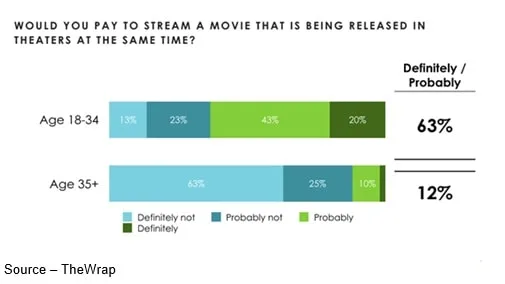
Others, especially families, find it more convenient and relaxing to use PVOD or watch something on one of their SVOD services.
“Streaming – paid or subscription viewing – has been a strong option for families, even if we weren’t in the middle of a pandemic,” Goodman commented. “Parents would simply skip the theater (and movie), chose a streaming film and satisfy everyone.
“Tentpoles or blockbusters will continue to be shown first in the theater while studios will have the option of streaming or theatrical appearance for low- and mid-tier films, depending on the relationship and studios goals,” he explained.
“Theaters and moviegoers aren’t going to go away,” he emphasized. “The ecosystem will simply be different and probably healthier for all parties … especially the consumer.”
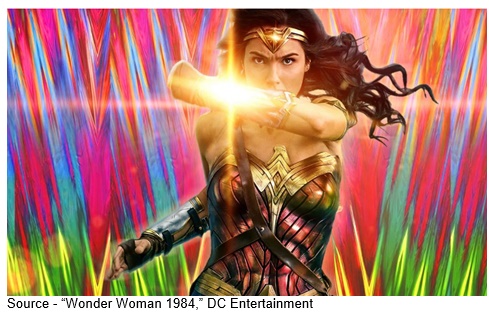 Once the pandemic is behind us and the industry becomes comfortable with its new normal, everyone in the food chain will have a common understanding of Diana Prince’s statement in Wonder Woman 1984 when she said, “My life hasn’t been what you think it has. We all have our struggles.”
Once the pandemic is behind us and the industry becomes comfortable with its new normal, everyone in the food chain will have a common understanding of Diana Prince’s statement in Wonder Woman 1984 when she said, “My life hasn’t been what you think it has. We all have our struggles.”
The theatrical to D2C model rather than direct D2C will probably be best because it provides broad consumer exposure and better word of mouth promotion, thus attracting more subscribers.
A balanced offering will also help the industry meet its common objective … to entertain folks.
In the meantime, enjoy your 15-cent theater ticket because the price will go up as everyone gets more comfortable with going to the movies.
# # #
Andy Marken – [email protected] – is an author of more than 600 articles on management, marketing, communications, industry trends in media & entertainment, consumer electronics, software and applications. Internationally recognized marketing/communications consultant with a broad range of technical and industry expertise especially in storage, storage management and film/video production fields. Extended range of relationships with business, industry trade press, online media and industry analysts/consultants